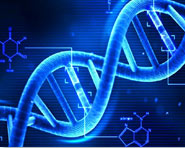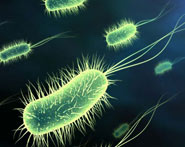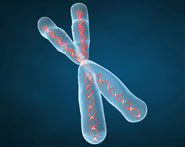


 النبات
النبات
 الحيوان
الحيوان
 الأحياء المجهرية
الأحياء المجهرية
 علم الأمراض
علم الأمراض
 التقانة الإحيائية
التقانة الإحيائية
 التقنية الحيوية المكروبية
التقنية الحيوية المكروبية
 التقنية الحياتية النانوية
التقنية الحياتية النانوية
 علم الأجنة
علم الأجنة
 الأحياء الجزيئي
الأحياء الجزيئي
 علم وظائف الأعضاء
علم وظائف الأعضاء
 الغدد
الغدد
 المضادات الحيوية
المضادات الحيوية|
Read More
Date: 2025-02-23
Date: 2025-03-03
Date: 2025-01-16
|
Several features of the production and structure of antibodies contribute in important ways to the functions of these molecules in host defense.
Antibodies function in the circulation, in tissues throughout the body, and in the lumens of mucosal organs. Antibodies are produced after stimulation of B lymphocytes by antigens in peripheral (secondary) lymphoid organs (lymph nodes, spleen, mucosal lymphoid tissues) and at tissue sites of inflammation. Many of the antigen-stimulated B lymphocytes differentiate into anti body-secreting plasma cells, some of which remain in lymphoid organs or inflamed tissues and others migrate to and reside in the bone marrow. Different plasma cells synthesize and secrete antibodies of different heavy-chain isotypes (classes). These secreted antibodies enter the blood, from where they may reach any peripheral site of infection, or enter mucosal secretions, where they prevent infections by microbes that try to enter through epithelia.
Protective antibodies are produced during the first (primary) response to a microbe and in larger amounts during subsequent (secondary) responses (see Fig. 7.3 in Chapter 7). Antibody production begins within the first week after infection or vaccination. The plasma cells that migrate to the bone marrow continue to produce antibodies for months or years. If the microbe again tries to infect the host, the continuously secreted antibodies provide immediate protection. At the same time, memory cells that had developed during the initial B cell response rapidly differentiate into anti body-producing cells upon encounter with the antigen, providing a large burst of antibody for more effective defense against the infection. A goal of vaccination is to stimulate the development of long-lived plasma cells and memory cells.
Antibodies use their antigen-binding (Fab) regions to bind to and block the harmful effects of microbes and toxins, and they use their Fc regions to activate diverse effector mechanisms that eliminate these microbes and toxins (Fig. 1). This spatial segregation of the antigen recognition and effector functions of antibody molecules was introduced in Chapter 4. Antibodies block the infectivity of microbes and the injurious effects of microbial toxins simply by binding to the microbes and toxins, using only their Fab regions to do so. Other functions of antibodies require the participation of various components of host defense, such as phagocytes and the complement system. The Fc portions of immunoglobulin (Ig) molecules, made up of the heavy-chain constant regions, contain the binding sites for Fc receptors on phagocytes and for complement proteins. The binding of antibodies to Fc receptors and complement proteins occurs only after several Ig molecules recognize and become attached to a microbe or microbial antigen. Therefore, even the Fc-dependent functions of antibodies require antigen recognition by the Fab regions. This feature of antibodies ensures that they activate effector mechanisms only when needed— that is, when they recognize their target antigens.
Fig1. Effector functions of antibodies. Antibodies are produced by the activation of B lymphocytes by antigens and other signals (not shown). Antibodies of different heavy-chain classes (isotypes) perform different effector functions, as illustrated schematically in (A) and summarized in (B). (Some properties of antibodies are listed in Chapter 4, Fig. 4.3.) Ig, Immunoglobulin; NK, natural killer.
Heavy-chain isotype (class) switching and affinity maturation enhance the protective functions of antibodies. Isotype switching and affinity maturation are two changes that occur in the antibodies produced by antigen-stimulated B lymphocytes, especially during responses to protein antigens (see Chapter 7). Heavy chain isotype switching results in the production of antibodies with distinct Fc regions, capable of different effector functions (see Fig. 1). By switching to different antibody isotypes in response to various microbes, the humoral immune system is able to engage diverse host mechanisms that are optimal for combating those microbes. Affinity maturation is induced by prolonged or repeated stimulation with protein antigens, and it leads to the production of antibodies with higher and higher affinities for the antigen, compared to the antibodies initially secreted. This change increases the ability of antibodies to bind to and neutralize or eliminate microbes. The progressive increase in antibody affinity with repeated stimulation of B cells is one of the reasons for the recommended practice of giving multiple rounds of immunizations with the same antigen for generating protective immunity.
Switching to the IgG isotype prolongs the duration that an antibody remains in the blood and therefore increases the functional activity of the antibody. Most circulating proteins have half-lives of hours to days in the blood, but IgG has an unusually long half-life because of a special mechanism involving a particular Fc receptor. The neonatal Fc receptor (FcRn) is expressed in placenta, endothelium, phagocytes, and a few other cell types. In the placenta, the FcRn transports antibodies from the mother’s circulation to the fetus (discussed later). In other cell types, the FcRn protects IgG anti bodies from intracellular catabolism (Fig. 2). FcRn is found in the endosomes of endothelial cells and phagocytes, where it binds to IgG that has been taken up by the cells. Once bound to the FcRn, the IgG is recycled back into the circulation or tissue fluids, thus avoiding lysosomal degradation. This unique mechanism for protecting a blood protein is the reason why IgG antibodies have a half-life of about 3 weeks, much longer than that of other Ig isotypes and most other plasma proteins. This property of Fc regions of IgG has been exploited to increase the half-life of other proteins by coupling the proteins to an IgG Fc region (Fig. 3). One of several therapeutic agents based on this principle is the tumor necrosis factor (TNF) receptor–Fc fusion protein, which functions as an antagonist of TNF and is used to treat various inflammatory diseases. By coupling the extra cellular domain of the TNF receptor to the Fc portion of a human IgG molecule using a genetic engineering approach, the half-life of the hybrid protein becomes much greater than that of the soluble receptor by itself.
Fig2. Neonatal Fc receptor (FcRn) contributes to the long half-life of IgG molecules. Circulating or extravascular IgG antibodies (mainly of the IgG1, IgG2, and IgG4 subclasses) are ingested by endothelial cells and phagocytes and bind the FcRn, a receptor present in the acidic environment of endosomes. In these cells, FcRn sequesters the IgG molecules in endosomal vesicles (pH ∼4). The FcRn-IgG complexes recycle back to the cell surface, where they are exposed to the neutral pH (∼7) of the blood, which releases the bound antibody back into the circulation or tissue fluid. Ig, Immunoglobulin.
Fig3. Antibodies and Fc-containing fusion proteins. An antibody specific for the cytokine tumor necrosis factor (TNF) (left) can bind to and block the activity of the cytokine and remain in the circulation for a long time (weeks) due to recycling by the neonatal Fc receptor (FcRn). The soluble extracellular domain of the TNF receptor (right) can also act as an antagonist of the cytokine, and coupling the soluble receptor to an IgG Fc domain, using a genetic engineering approach, results in a prolonged half-life of the fusion protein in the blood by the same FcRn-dependent mechanism. Ig, Immunoglobulin.
With this introduction, we proceed to a discussion of the mechanisms used by antibodies to combat infections. Much of the chapter is devoted to effector mechanisms that are not influenced by anatomic considerations; that is, they may be active anywhere in the body. At the end of the chapter, we describe the special features of antibody functions at particular anatomic locations.



|
|
|
|
حقن الذهب في العين.. تقنية جديدة للحفاظ على البصر ؟!
|
|
|
|
|
|
|
علي بابا تطلق نماذج "Qwen" الجديدة في أحدث اختراق صيني لمجال الذكاء الاصطناعي مفتوح المصدر
|
|
|
|
|
|
|
مشاتل الكفيل تنتج أنواعًا مختلفة من النباتات المحلية والمستوردة وتواصل دعمها للمجتمع
|
|
|